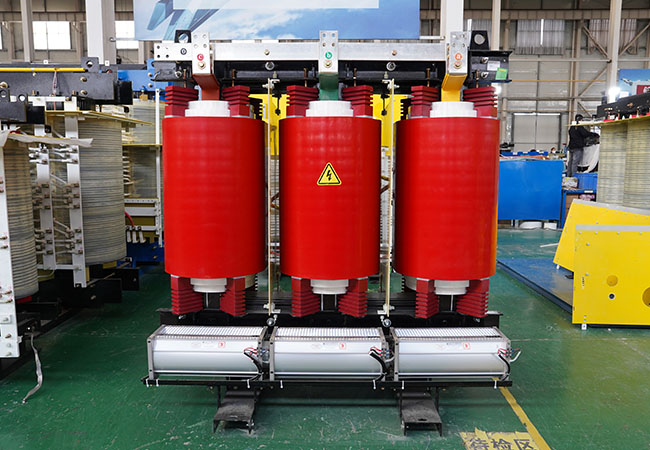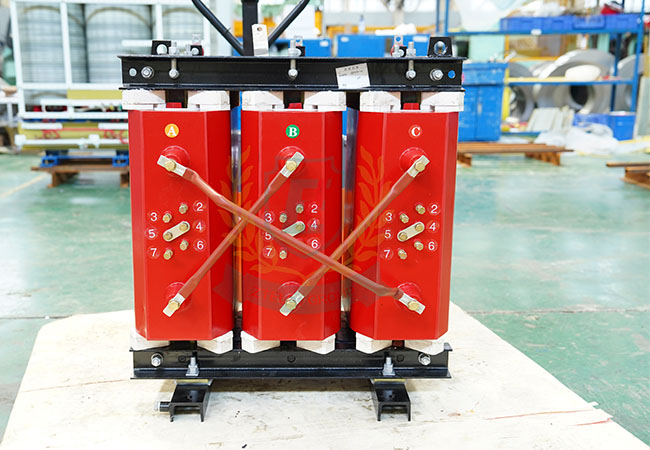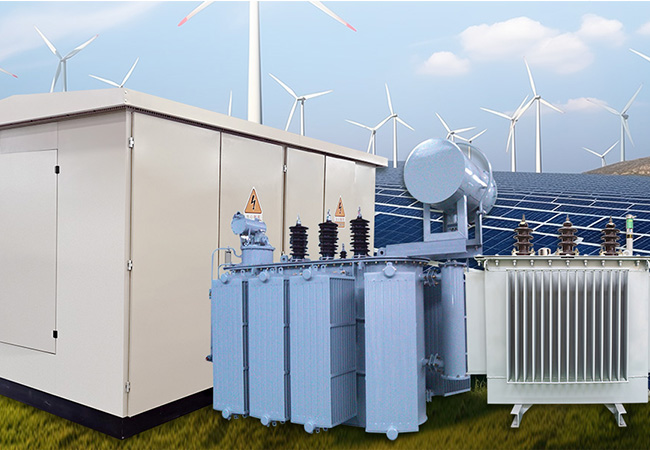What are the precautions for the installation and maintenance of dry-type transformers?
05-20 2025 | By:
The precautions for the installation and maintenance of dry-type transformers are as follows:
1. Installation precautions
1. Installation environment
The altitude of the installation site of the Epoxy Resin Transformer should generally not exceed 1000m. If it exceeds this altitude, the heat dissipation and insulation performance of the transformer will be affected due to factors such as thin air.
The ambient temperature should be between -5℃ and +40℃. Too high a temperature will cause the temperature of the transformer winding to rise too quickly, reducing the service life of the insulating material; too low a temperature may make some materials inside the transformer brittle and easily damaged when impacted.
The installation site should be free of significant dust, harmful gases and steam, explosive and corrosive gases. These impurities may be deposited on the surface of the transformer, affecting heat dissipation and even corroding the components of the transformer.
The installation site of the Epoxy Resin Cast Dry-Type Distribution Transformer should have good ventilation conditions. Under normal natural ventilation conditions, the ground of the transformer room should be 1.1m higher than the outdoor ground to ensure that the air can circulate smoothly and take away the heat generated during the operation of the transformer.
2. Foundation installation
The foundation of the transformer should be solid and firm, and a concrete foundation is generally used. The size of the foundation should be determined according to the size and weight of the transformer, and the transformer should be kept stable after installation on the foundation. The horizontal error of the foundation should not exceed 5mm to prevent the transformer from tilting after installation and affecting its normal operation. The transformer’s anti-vibration device, such as anti-vibration rubber pads, should be installed on the foundation. This is because the transformer will vibrate during operation. If there are no good anti-vibration measures, it may cause the transformer components to loosen and affect the reliability of the electrical connection. 3. Electrical connection The connection of the high-voltage and low-voltage leads of the Cast Resin Transformer must be firm and reliable. Before connection, the surface of the connection part should be cleaned to remove impurities such as the oxide layer, and then connected with appropriate connection bolts and terminals. The tightening torque of the bolts should meet the specified requirements. Generally speaking, the tightening torque of the M12 bolt should not be less than 40N·m to ensure good electrical contact, reduce contact resistance, and prevent overheating. For transformers with neutral point grounding, the grounding connection of the neutral point must meet the design requirements. The grounding resistance should generally not be greater than 4Q. Good grounding can ensure that the transformer can introduce the fault current into the ground in time when a fault occurs, protecting the safety of equipment and personnel.
4. Installation of protective devices
Temperature monitoring devices, such as platinum thermal resistors and other temperature sensors, should be installed to monitor the temperature of the transformer windings. When the temperature exceeds the set value (generally 100℃-
130C), an alarm signal can be issued to remind the operating personnel to take measures to prevent the transformer from being damaged due to overheating.
Install a protective fence. The height of the fence should generally not be less than 1.7m. A certain safety distance should be maintained between the fence and the transformer, usually not less than 1m, to prevent personnel from accidentally touching the live parts. Obvious warning signs should be hung on the fence, such as “Stop, high voltage danger”.
2. Maintenance precautions
1. Daily inspection
Check the appearance of the transformer to see if there is dust or foreign matter accumulated. If there is a lot of dust, it will affect the heat dissipation of the transformer, and dry compressed air should be used for blowing and cleaning. At the same time, check whether the outer shell of the transformer is deformed or damaged. If cracks are found in the outer shell, moisture, dust, etc. may enter the transformer and affect its normal operation.
Check whether the reading of the temperature display device is normal. During normal operation, the winding temperature of the transformer should be within the specified range. If the temperature shows an abnormal increase, it may be caused by excessive load, poor ventilation or internal faults, and further inspection is required.
Check whether the operating sound of the transformer is normal. Under normal circumstances, the transformer will emit a uniform “metaphor” sound. If you hear abnormal sounds, such as “pop” or “squeak”, there may be problems such as partial discharge or loose parts inside, which need to be dealt with in time.
2. Regular maintenance (half a year to one year)
Check the tightness of the electrical connection parts of the transformer. Since the transformer will be affected by electromagnetic force and vibration during operation, the connecting bolts may become loose. Use a torque wrench to tighten the connecting bolts according to the specified torque, and check whether the terminal has signs of overheating and discoloration. If discoloration is found, it may be that the contact resistance is too large, and the connection parts need to be cleaned or replaced.
Check the cooling system of the transformer. For transformers with natural ventilation, check whether the vents are unobstructed and whether there is any blockage; for transformers with air cooling devices, check the operation of the fan, including the speed of the fan, bearing lubrication, etc. Whether the fan operates normally or not is directly related to the heat dissipation effect of the transformer.
Check the insulation performance of the transformer. Use an insulation resistance tester to measure the insulation resistance of the transformer. Generally, the insulation resistance between high voltage-low voltage, high voltage-ground, and low voltage-
ground should not be less than 300MQ at the beginning (when the temperature is 20℃), and the change should not exceed 30% compared with the last measurement result. If the insulation resistance is too low, it may be caused by moisture or aging of the insulation, and it is necessary to dry it or replace the insulation parts.
3. Fault maintenance
If a short circuit occurs in the transformer, the power supply should be cut off first to prevent the fault from expanding. Then conduct a comprehensive inspection of the transformer, including whether the winding is short-circuited, open-circuited, and whether the insulation is damaged. For damaged windings, it is generally necessary to rewind; for the damaged insulation part, it should be repaired or replaced according to the degree of damage.
When a partial discharge fault occurs in the transformer, a partial discharge detector should be used to locate the discharge point. Partial discharge may be caused by air gaps or impurities inside the insulation. After finding the discharge point, you can take measures such as replacing the insulation material or filling the insulation glue to repair it.
You may also find these interesting:




